James Benning & Danh Vo
jb & dv
15 FEB until 15 MAR 2025
Opening – 14 FEB 2025, 6-9 pm
Linienstraße 155, 10115 Berlin
The long-time friendship between James Benning and Danh Vo, cultivated around a mutual exploration of histories through details and relics, physically manifests, for the first time, in jb & dv at neugerriemschneider. Found, collected and reproduced objects, depicted or re-presented in matter-of-fact stagings, stand at the core of the artists’ methodologies. Their approaches see immediate surroundings appropriated and transformed, as political and personal significances are extracted from divergent geographical and cultural origins as subtle narratives. This two-artist exhibition highlights their shared tactics through a selection of recent filmic, sculptural and photographic works, each dissecting portraiture, tributes, memory and ecology as tenets that define their practices as they cross, entangle with and negotiate one another.

still from James Benning, Poppy Fields near Gorman, 2019.
© James Benning. Courtesy the artist and neugerriemschneider, Berlin
three-channel hd video installation
The deconstructed portrait is critical to both, functioning as a means of examining its subjects through their effects, distilling personas in actions that reimagine the process of identification. Physical traits are isolated, highlighted or done away with entirely, with what remains functioning to define figures anew. Benning’s clothes (2024) comprises garments worn by eight figures formative to the artist’s conception of the iconoclastic radical – Angela Davis, Cesar Chavez, Elizabeth Eckford, Rick St. Germaine, Father James Groppi, Patty Hearst, Jacqueline Kennedy Onassis and John Lennon – their sweaters, jackets, dresses and shirts accompanied by the widely disseminated photographs from which they are excerpted. A passage from Benning’s upcoming memoir too expands the bounds of portrayal. In the 1972 diary entry on display, he touchingly recounts an exchange with his father, concisely elucidating his character and his impact on the artist’s personal and creative growth. Benning, in each work, collapses time on itself, questioning archival, likeness and embodiment. In Vo’s untitled (2021), a first-century Roman head hewn from marble, its features worn, rounded and shallowed by time, sits on a wooden structure atop a refrigeration unit. A pair of bronze legs modeled on those of artist Heinz Peter Knes hang in the cube’s center, framed by glass-and-steel, their feet crossed and toenails polished. It’s not enough to bronze Knes’ feet, Vo also keeps them cool. Witty and sexy, this may also be a portrait of the act of preservation.
For Benning and Vo, the natural world is a bearer of and conduit for memory, the environmental necessarily entwined with the human in an infinite exchange. In his three-channel film Poppy Fields near Gorman (2019), Benning pictures fields of poppies amid a superbloom. Following months of heavy rainfall upon the dry desert, hillsides become blanketed in yellows, oranges and purples during this rare event, transforming the arid Southern Californian landscape into one awash with color. The projections’ flowers sway in the wind, slowed by Benning as to allow each frame to dissolve into the next. Reduced to just a fifth of their natural speed, the images, accompanied by an ambience of birdsong and gently rushing wind, take on a painterly softness that belies the threat inherent in natural wonders, and the devastating periods of drought that yielded this spectacle. Vo’s 2.2.1861 (2009 – ongoing), written in his father’s calligraphic hand, reproduces a letter from Catholic missionary Théophane Vénard (1829 – 1861) who likens himself to a flower cut down by a gardener as he bids farewell to his own father before being put to death in Vietnam. When Vo moved to Güldenhof, a farm north of Berlin, he made lush candid photographs of the flowers growing there. Vo’s images were generic enough to give the prints an encyclopedic aura, something he accentuated by having his father write out the two Latin names of each flower in pencil. For the body of work on view here, Vo returned to Berlin and documented a local flower shop. He had his father write just the intimate first half of each photographed flower’s Latin name (Rosa, Chrysanthemum). Shown are cut flowers, made for commercial distribution into the human sacraments of life, love and death. The city flowers, like the images, are implicated: they can’t shake society, but still carry an earthy mystique.
James Benning (b. 1942) has been the subject of solo exhibitions at international museums and institutions including FAHRBEREITSCHAFT, Berlin (2024); Kunstverein in Hamburg, Hamburg (2015); Kunsthaus Graz, Graz (2014); VOX, centre de l’image contemporaine, Montréal (2014); Natural History Museum, Vienna (2014); and Argos, Centre for Art and Media, Brussels (2012). Notable group exhibitions presenting work by James Benning include the Whitney Biennial, New York (1979, 1981, 1983, 1987, 2006, 2014); documenta 12, Kassel (2007); and documenta 6, Kassel (1977). Screenings and retrospectives of James Benning’s film have been held at numerous institutions worldwide, including at Film Society of Lincoln Center, New York; Whitney Museum of American Art, New York; Kunstmuseum Basel, Basel; Museum of the Moving Image, New York; and Arsenal, Institut für Film und Videokunst, Berlin. Benning lives and works in Val Verde, California.
Danh Vo (b. 1975) has been the subject of solo exhibitions at international museums and institutions including Secession, Vienna (2021); Musée d’Art Moderne Grand-Duc Jean, Luxembourg (2021); The National Museum of Art, Osaka (2020); South London Gallery, London (2019); M+, Hong Kong (2018); CAPC musée d’art contemporain de Bordeaux, Bordeaux (2018); Solomon R. Guggenheim Museum, New York (2018); National Gallery Singapore, Singapore (2016); Museum Ludwig, Cologne (2015); Museo Jumex, Mexico City (2014); Villa Medici, Rome (2013); Museion, Bolzano (2013); Musée d’Art Moderne de la Ville de Paris (2013); Art Institute of Chicago, Chicago (2012); Kunsthaus Bregenz, Bregenz (2012); Kunsthalle Fridericianum, Kassel (2011); Statens Museum for Kunst, Copenhagen (2010); Kadist, Paris (2009); Kunsthalle Basel, Basel (2009); and Stedelijk Museum, Amsterdam (2008). Vo lives and works in Berlin, Güldenhof and Mexico City.
For further information, please contact mail@neugerriemschneider.com.
Noa Eshkol
textile traces
7 SEP 2024 until 15 MAR 2025
Christinenstraße 18 – 19, 10119 Berlin
The sixth solo exhibition of Noa Eshkol’s work at neugerriemschneider, textile traces, staged in commemoration of her centennial, centers the narrative qualities of the visual artist and choreographer’s practice. A wide selection of her wall carpets, many of which are shown for the first time, form a veritable storyboard of the journeys that often served as their inspirations. Acting as tiered stores of memory, fueled by the power of her found materials, the works become a chronicle of discovery that unfolds across our Christinenstrasse space’s three rooms, hinting at a trio of theatrical acts and, in turn, the structural rigor that underlies Eshkol’s varied pursuits.
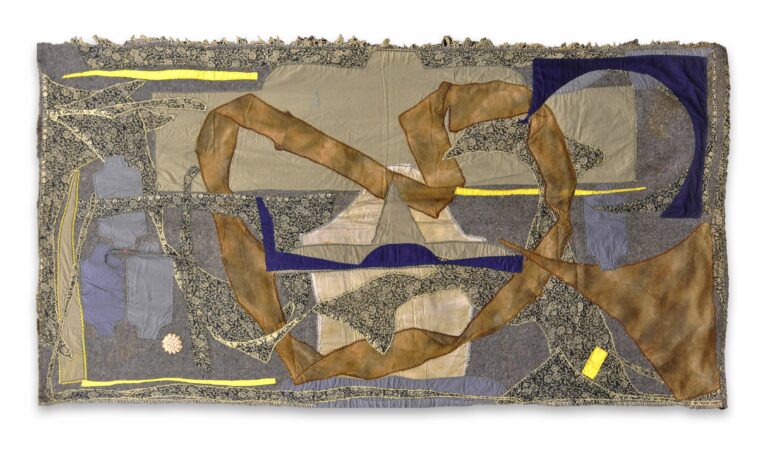
Noa Eshkol, Latrun Monastery, 2000s
© Noa Eshkol. Courtesy the artist and neugerriemschneider, Berlin. Photo: Jens Ziehe, Berlin
cotton, synthetic fiber, viscose
80 x 157 cm
Eshkol’s textile tableaux are, at their cores, tributes to their materials. While the predetermined forms of the offcuts, rags, scraps and panels that comprise them tease their once-intended use, they function within the wall carpets entirely independently of their prior utility. Rather than accepting or being limited by their prescribed roles, Eshkol instead brought an openness to her media, encountering them with new eyes each time. By assuming nothing, seeing these fragmented components as tools, she afforded herself a profound understanding of how they, in their present states, were to become sumptuous images. This approach, unburdened by preconceptions, enabled Eshkol to mold her workpieces into rich stories.
Vividly illustrated, the evocative scenes reflect a revelatory inclination to close observation that characterized both her fine-art and dance practices, and provide a forum for the diverse facets of her persona to enter dialog. While kept decidedly separate by Eshkol, these dual vocations inevitably came to share conceptual groundwork. Sets of guidelines and strict adherence to them stood at the forefront of each, giving rise to highly methodical series of systems – ones that concerned themselves with cataloging and deploying repetition to capture ephemeral moments.
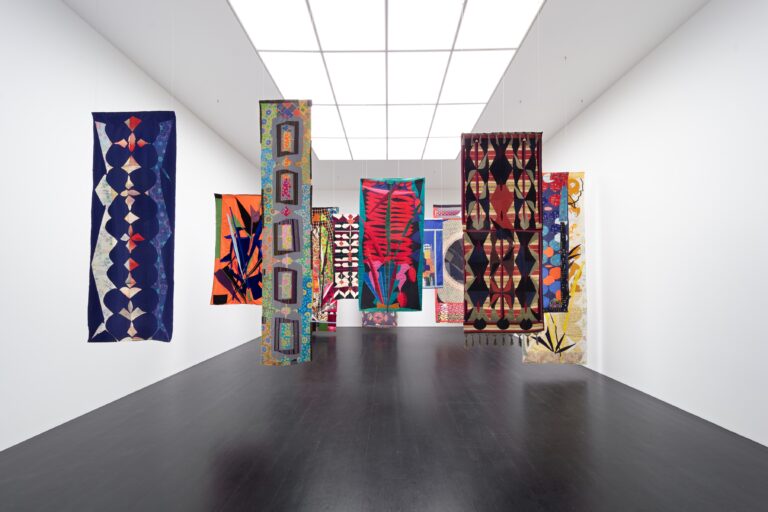
installation view: Noa Eshkol, textile traces, September 7, 2024 – March 15, 2025, neugerriemschneider, Berlin
© The Noa Eshkol Foundation for Movement Notation, Holon, Israel.
Courtesy The Noa Eshkol Foundation for Movement Notation, Holon, Israel, and neugerriemschneider, Berlin. Photo: Jens Ziehe, Berlin
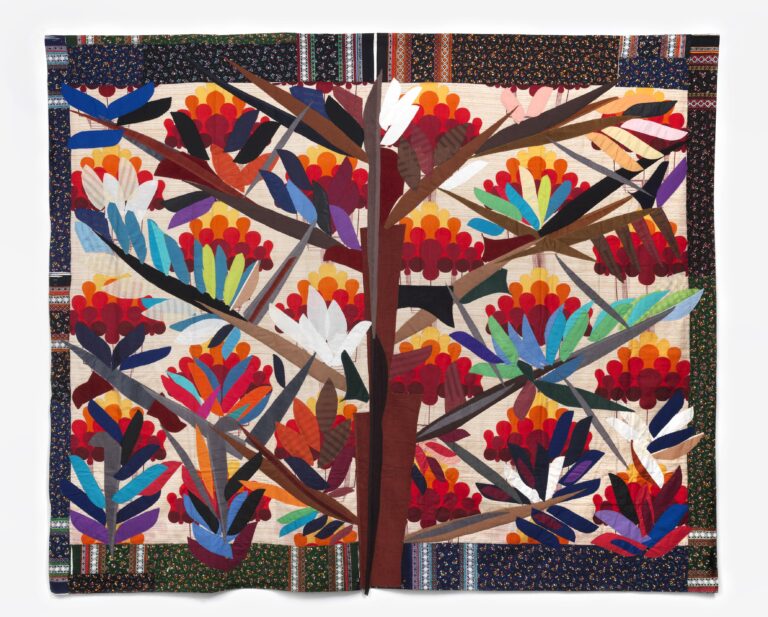
Noa Eshkol, Geula’s Tree, 1990s
© Noa Eshkol. Courtesy the artist and neugerriemschneider, Berlin. Photo: Jens Ziehe, Berlin
synthetic fiber, cotton, wool
250 x 296 cm
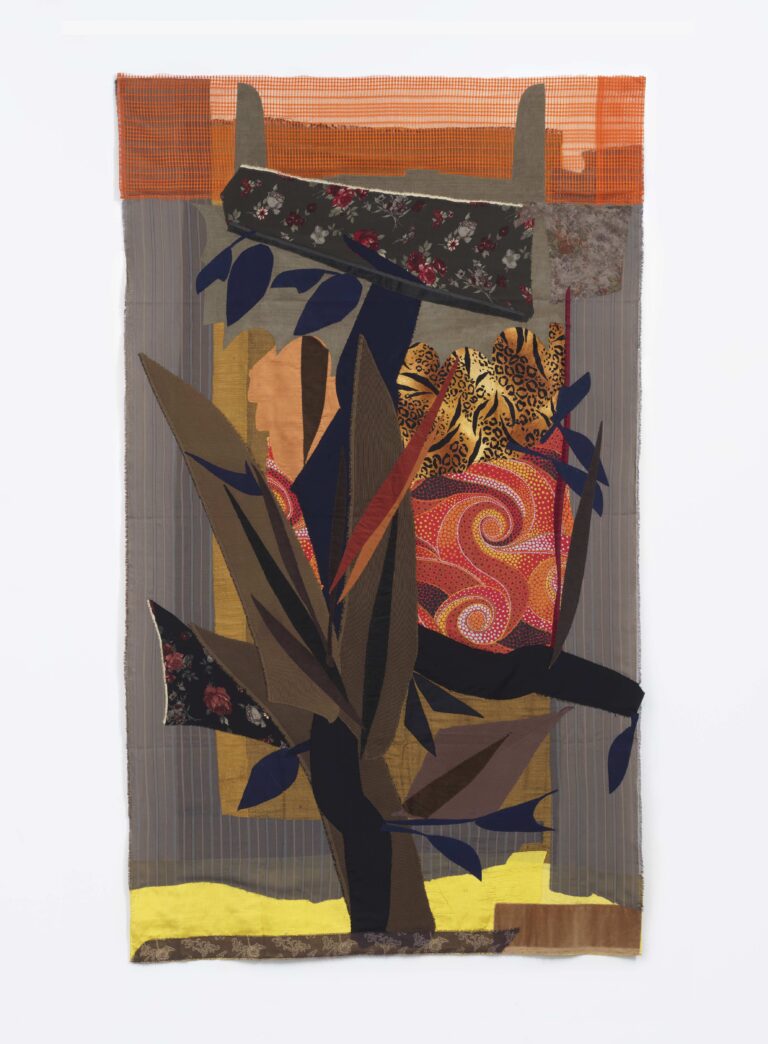
Noa Eshkol, Old Tree I , 1980s
© Noa Eshkol. Courtesy the artist and neugerriemschneider, Berlin. Photo: Jens Ziehe, Berlin
synthetic fiber, silk, cotton, viscose
279 x 167 cm
The suite of wall carpets presented showcases Eshkol’s world in a succession of expressive scenarios, a group of which is presented free-hanging to reveal the works’ utilitarian construction, traveling through dense depictions of forested wilds and abstracted interpretations of choreographic formations, before venturing into portrayals of natural phenomena and the cosmos. In Geula’s Tree (1990s), elongated strips of brown become a tree’s trunk and branches. Reaching upward, the limbs sprout tufts of autumn-toned foliage, while leaves in blues, greens and off-whites line their lengths. Strips of dark fabric, printed in florals and punctuated with ornamental bands, frame the tree, creating a boundary that in a single motion defines pictorial space and allows it to be transgressed. Nature gives way to orchestration in The Locomotive (1990s), which sees layered sequences of repeated circles mimic twirling dancers viewed from above. The spiraling forms create a sense of motion akin to the driving wheels of the self-propelled engine that lends the work its title. Motioning the viewer in towards its center, Planet (1998) ascends above the terrestrial plane, extending to the sky and beyond. A radial arrangement of patterned swatches emanates from the work’s middle, rippling outward and evoking a ringed celestial body. Four-pointed stars glinting in white are applied to the arrangement’s surface, imparting a depth to Eshkol’s spacescape and exemplifying the artist’s endless capacity for deftly crafting a distinct sense of place.
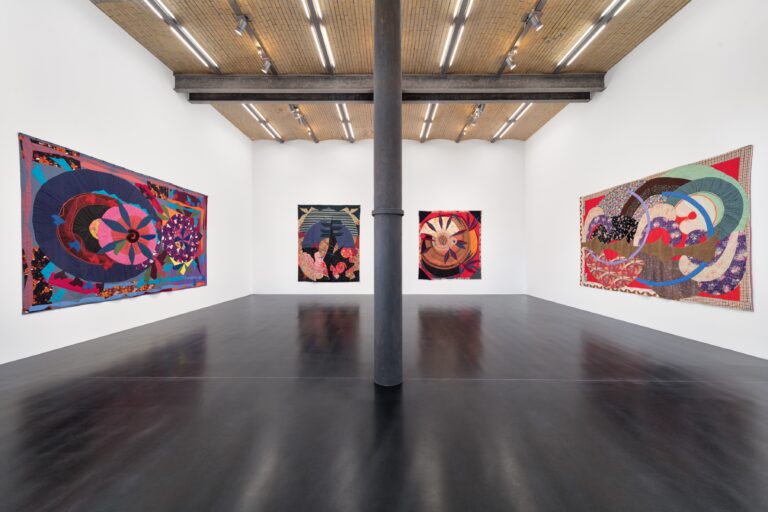
installation view: Noa Eshkol, textile traces, September 7, 2024 – March 15, 2025, neugerriemschneider, Berlin
© The Noa Eshkol Foundation for Movement Notation, Holon, Israel.
Courtesy The Noa Eshkol Foundation for Movement Notation, Holon, Israel, and neugerriemschneider, Berlin. Photo: Jens Ziehe, Berlin
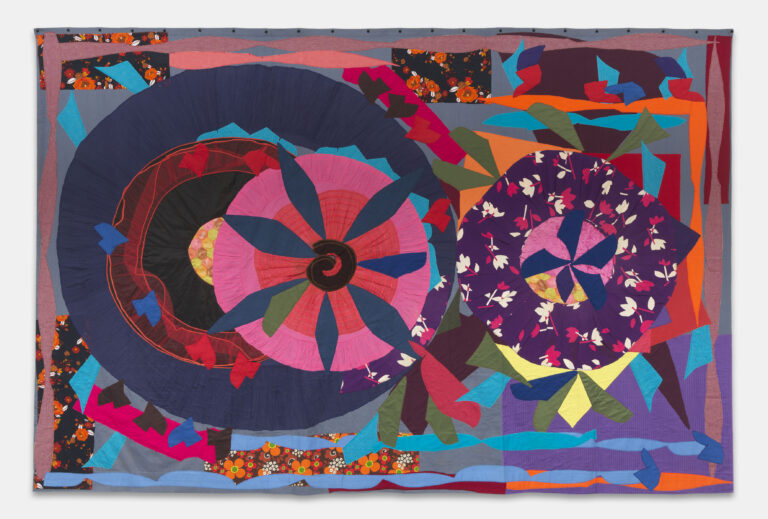
Noa Eshkol, The Locomotive , 1990s
© Noa Eshkol. Courtesy the artist and neugerriemschneider, Berlin. Photo: Jens Ziehe, Berlin
cotton, linen, wool, silk, tulle
272 x 411 cm
The artwork of Noa Eshkol (b. 1924, Degania Bet, Mandatory Palestine; d. 2007, Holon, Israel) has been the subject of international solo and group exhibitions at Georg Kolbe Museum, Berlin (2024); Norrköpings Konstmuseum, Norrköping (2022); Oslo Kunstforening, Oslo (2021); Casa do Povo, São Paulo (2021); 34th Bienal de São Paulo, São Paulo (2021); Van Abbemuseum, Eindhoven (2019); CFHILL Art Space, Stockholm (2019); Vleeshal, Middelburg (2017); 20th Biennale of Sydney, Sydney (2016); Badischer Kunstverein, Karlsruhe (2016); Museum of Contemporary Art Tokyo, Tokyo (2014); Kunst- und Kulturstiftung Opelvillen Rüsselsheim, Rüsselsheim (2013); TBA21 Thyssen-Bornemisza Art Contemporary, Vienna (2012); The Jewish Museum, New York (2012); Los Angeles County Museum of Art, Los Angeles (2012); The Israel Museum, Jerusalem (2011); Center for Contemporary Art, Tel Aviv (2011); The Open Museum, Tefen Industrial Park, Kfar Vradim (2010); Hamumche Gallery, Tel Aviv (1998); Mishkan Museum of Art, Ein Harod (1996); Danish Museum of Decorative Art, Copenhagen (1980); and Tel Aviv Museum of Art, Tel Aviv (1978).
This year, KW Institute for Contemporary Art and the Georg Kolbe Museum reissued Noa Eshkol and Avraham Wachman’s landmark 1958 publication “Movement Notation” for the first time since its initial release.
Cory Arcangel
Let’s Play Majerus G3
Cory Arcangel: AUDMCRS performed by lena willikens presented by Michel Majerus Estate
Silent Green
Gerichtstrasse 35, 13347 Berlin
12 SEP at 8 pm
Book launch & Conversation
with Cory Arcangel, Daniel Birnbaum and Stephanie Seidel
14 SEP 2024 at 12 pm
Michel Majerus Estate, Knaackstraße 12, 10405 Berlin
The Michel Majerus Estate is pleased to announce Let’s Play Majerus G3, a project featuring a previously unexplored aspect of the artist’s archive: his computer. An initiative led by artist Cory Arcangel, Let’s Play Majerus G3 takes as its point of departure the laptop that Majerus used in his late career, now reactivated following a restoration undertaken in cooperation with digital-art organization Rhizome.
By examining this crucial tool, Let’s Play Majerus G3 — an expansive program comprising the exhibition at the Michel Majerus Estate, a talk, a performance and a YouTube series — allows unprecedented access to Majerus’ digital studio and the approaches that informed it, representing a revolutionary development in the understanding of his oeuvre, and allowing a uniquely first-hand glimpse, through the eyes of a fellow artist, into this rich primary source.
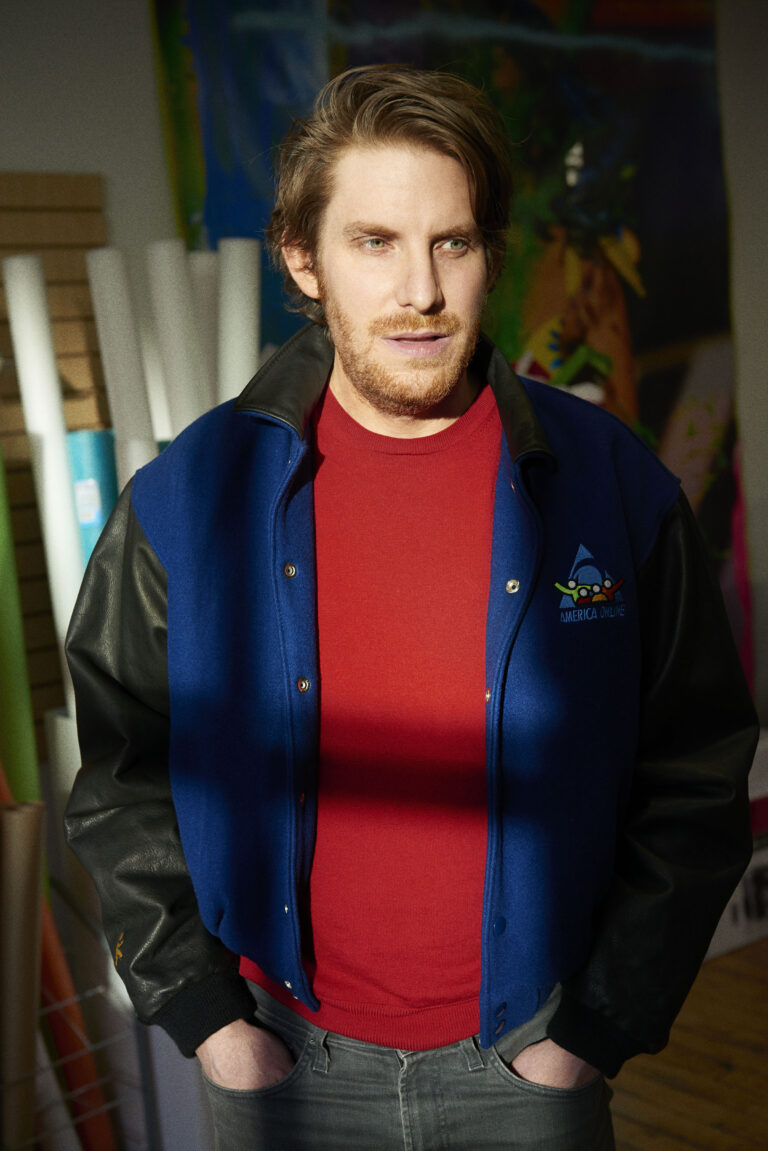
Cory Arcangel
Foto/ Photo: Tim Barber
As culture itself becomes increasingly digitized, more and more of it will end up in drawers like this — discarded, forgotten, and inoperable.
– Cory Arcangel in Artforum, summer 2014
While their respective practices began nearly a decade apart, and despite the disparate nature of their media, Majerus and Arcangel are united by a core interest in the aesthetics of digital imagery, the generative potential of new technologies, critique of said technologies and the free traversal of analog and digital worlds.
In 2022, Kunstverein in Hamburg staged Data Streaming, an exhibition that showcased a selection of late work by Majerus, and probed how the increasing presence of the digital in the late 1990s profoundly impacted his practice. On view concurrently with Arcangel’s presentation Flying Foxes, the pairing of shows brought the dialogue between the two artists to the fore, drawing attention to the brief moment in which their practices overlapped.
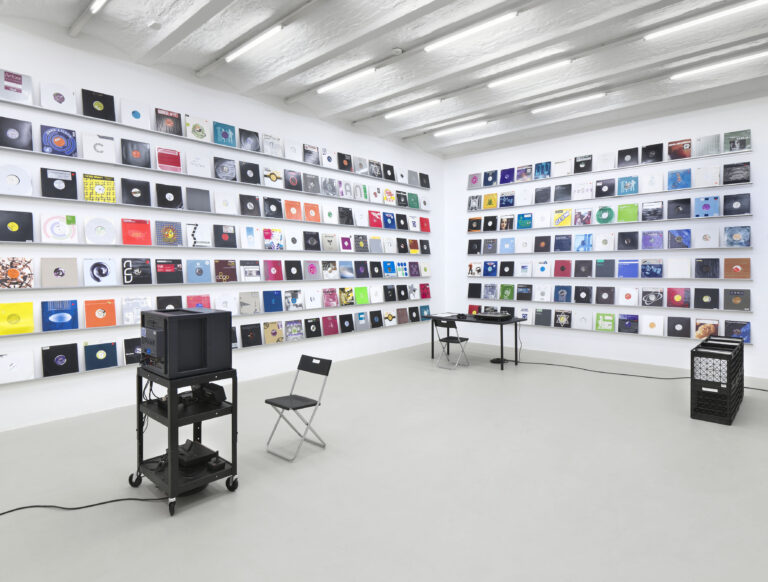
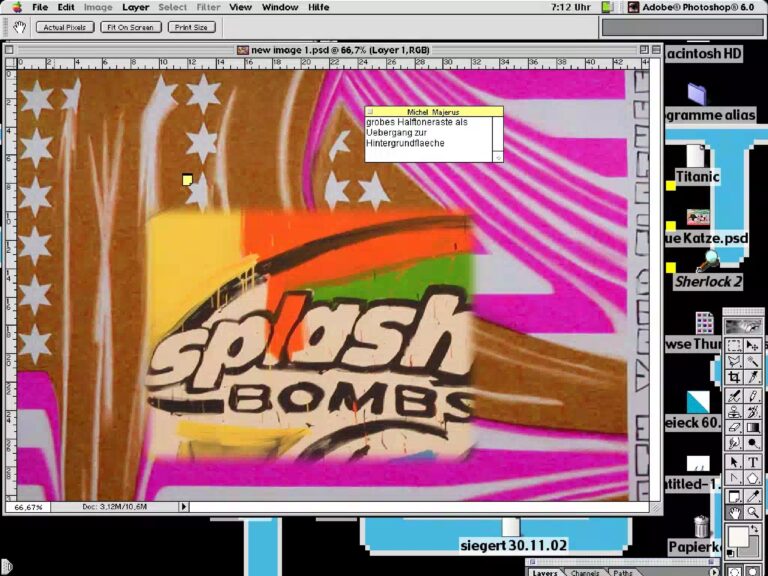
Bildschirmfoto einer Photoshop datei / Screenshot of photoshop file on Michel Majerus’ laptop (Powerbook G3)
Aufgenommen von / selected by Cory Arcangel, Nov. 2024
© Michel Majerus Estate, 2024
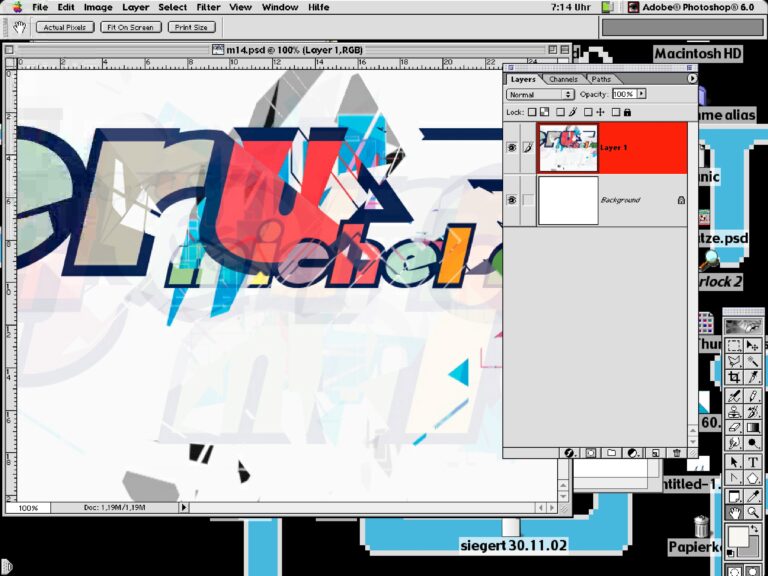
Bildschirmfoto einer Photoshop datei / Screenshot of photoshop file on Michel Majerus’ laptop (Powerbook G3)
Aufgenommen von / selected by Cory Arcangel, Nov. 2024
© Michel Majerus Estate, 2024
Using emulation developed by Dragan Espenschied and Mona Ulrich from Rhizome, Arcangel here reactivates Majerus’ laptop (a 1998 Macintosh PowerBook G3) — a tool that Majerus spent significant time with on a daily basis, conceiving works and exhibitions, assembling his schedule, conducting communication and experimenting with software. Arcangel’s project highlights Majerus’ use of the then-burgeoning internet, the scale, speed, accessibility and autonomy of which opened new doors for artists, and affords a singularly comprehensive look at his digital studio. Within the emulation environment, Majerus’ computer exists as the artist last used it, exactly as it stood in 2002, providing detailed insight into his process of conception, production and display, with files ranging from sketches of future works to exhibition views of them in their realized forms.
Arcangel’s work is driven by the temporality and technological dependence of aesthetics, with modern-day technology constituting, in a broad sense, a key advancement in human history — a chronology that includes everything from musical instruments of the Renaissance to contemporary video games. Among a generation of artists distinguished by the integration of new media in their practices, Arcangel’s early negotiation of a digital present stands as exceptional.
His engagement with archival computing here builds upon a 2014 project in which he, together with several organizations including the Carnegie Mellon Computer Club — a team specializing in obsolete computers — accessed over 30-year-old floppy discs from the collection of the Andy Warhol Museum in Pittsburgh, rescuing a group of long-lost digital works by the artist.
The project at the Michel Majerus Estate, in exploring and presenting Majerus’ computer, foregrounds the technological challenge of re-accessing a wealth of information thought to be lost. It lends consideration to the increasingly prominent role of archiving digital materials and interrogates the ways in which these holdings crucially factor into authoring arthistorical narratives surrounding 21st-century protagonists.
Let’s Play Majerus G3 is accompanied by an in-person and online program. The exhibition at the Michel Majerus Estate features works by Arcangel that span nearly two decades, including new commissions displayed alongside selected works by Majerus in a juxtaposition that suggests a continuity in non-concurrent, albeit conceptually linked, bodies of work.
On YouTube, Arcangel — in his debut as a “YouTuber” — posts “Let’s Play” videos that feature him as he navigates Majerus’ computer as part of this project. These videos are also presented on the Michel Majerus Estate’s website and by Rhizome as part of their series of presentations on digital-art archival, “ArtBase Anthologies.”
The project is accompanied by a conversation between Cory Arcangel and Dragan Espenschied during Gallery Weekend Berlin, followed by a new iteration of Arcangel’s performance The AUDMCRS Underground Dance Music Collection of Recorded Sound (2015 – ongoing) in fall 2024, and a series of events with Rhizome conducted over the course of the exhibition.
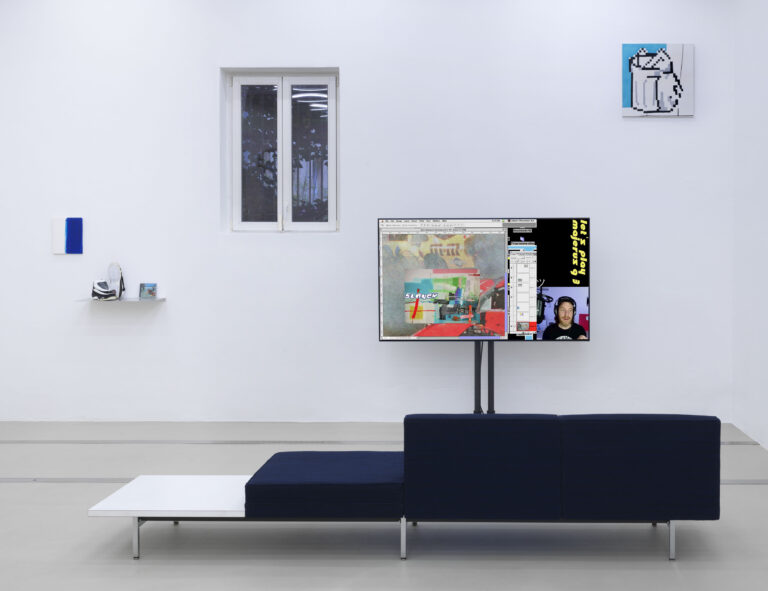
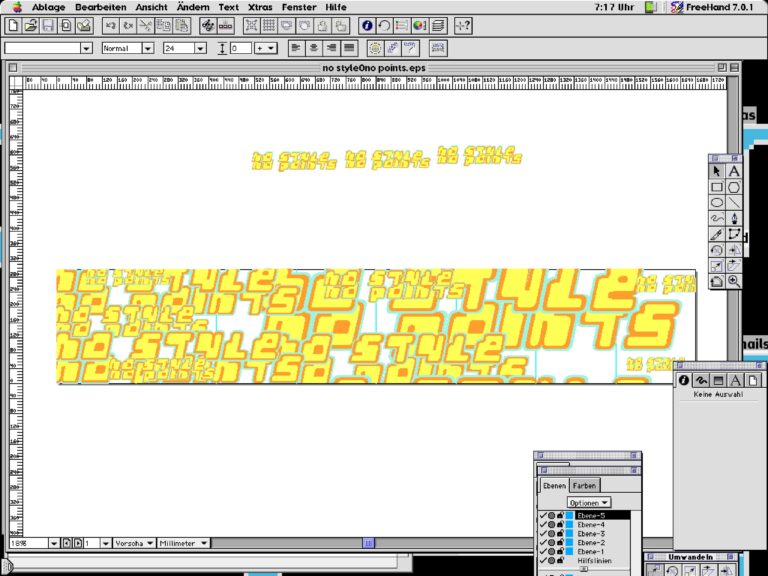
Bildschirmfoto einer Photoshop datei / Screenshot of photoshop file on Michel Majerus’ laptop (Powerbook G3)
Aufgenommen von / selected by Cory Arcangel, Nov. 2023
© Michel Majerus Estate, 2024
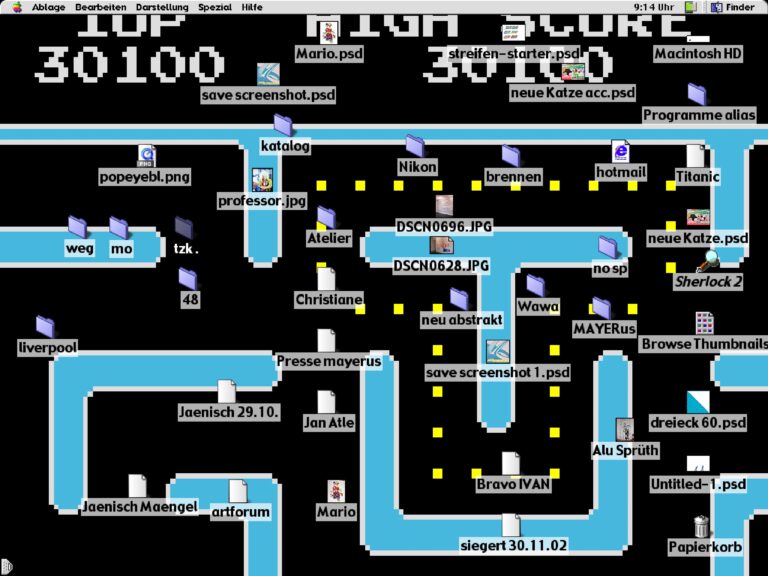
Bildschirmfoto des Desktops von / Screenshot of photoshop file on Michel Majerus’ laptop (Powerbook G3)
Aufgenommen von / selected by Cory Arcangel, Nov. 2023
© Michel Majerus Estate, 2024
Let’s Play: Majerus G3 was created in cooperation with Rhizome, an artist-founded platform for presenting, researching, and preserving digital art. The emulation of Majerus’ computer, developed by OpenSLX, was overseen by Dragan Espenschied (Preservation Director at Rhizome) and Mona Ulrich. The project is supported by grants from the Institute for Contemporary Art Research (IFCAR), awarded by the Zurich University of the Arts, where Arcangel currently teaches; and from Arcangel Surfware, a software and merchandise publisher founded by Arcangel in 2014.
Cory Arcangel (b. 1978, Buffalo, US) is an artist living and working in Stavanger, Norway. His work has been the subject of solo exhibitions at Kunstverein in Hamburg, Hamburg (2022); Whitney Museum of American Art, New York (2011); Carnegie Museum of Art, Pittsburgh (2012); The Barbican, London (2011); Reykjavik Art Museum, Iceland (2015); Hamburger Bahnhof — Museum für Gegenwart, Berlin (2010); Museum of Contemporary Art, North Miami (2010) and Migros Museum für Gegenwartskunst, Zurich (2005).
Rhizome champions born-digital art and culture through commissions, exhibitions, scholarship and digital art conservation. Founded in 1996 by artist Mark Tribe as an email discussion list including some of the first artists to work online, Rhizome has played an integral role in the history of contemporary art engaged with digital technologies and the internet. Since 2003, Rhizome has been an affiliate in residence at the New Museum in New York City.
Housed in the artist’s former studio, the Michel Majerus Estate is dedicated to researching, presenting and contextualizing the work of Michel Majerus (1967 – 2002), and preserving the cultural legacy of an extensive oeuvre created during a short period that began in the late 1980s. In this time, he developed a pioneering visual language that freely drew upon subcultures, mass media, nascent digital technologies and a wide array of arthistorical sources, sampling their component parts and reintegrating them into his compositions and installations. Since 2012, the Michel Majerus Estate has invited guest curators, scholars and artists to engage with Majerus’ practice through exhibitions and projects staged at the Estate. Previous collaborators include Brigitte Franzen, Fabian Schöneich, Joseph Kosuth, Laura Owens and Jordan Wolfson.
